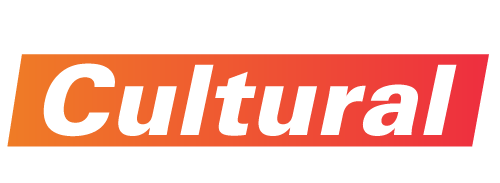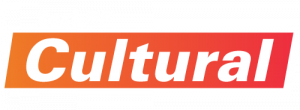Content
The assumption of constant demand is consistent with the assumptions underlying the EOQ formula. If suppliers take some time to provide goods, orders need to be placed in advance of running out. Point A represents the cost at the order quantity indicated by the EOQ. If inventory is ordered in larger quantities, total costs will increase to point B1, at which stage bulk discounts are available, bringing the costs down to point B. Any calculations will involve finding which cost out of A, B or C is the lowest, as Example 1 will show. Coronavirus is certainly going to disrupt manufacturing and supply for many businesses.
For example, you cannot spend a budget on marketing campaigns to sell obsolete stock. In addition, you cannot use warehouse space efficiently and this can increase inventory costs. Referring to businesses that manage more than one facility across multiple locations. Businesses may operate several facilities for reasons such as expanding storage capacity, faster shipment of products to the end users by being closer to shipping facility, or stock occasional overstock with buffer warehouses. EOQ is the optimal level of inventory to purchase to meet customer demand. Having the perfect amount of stock on hand reduces storage, order and holding costs while eliminating unnecessary expenses.
Obsolete Inventory.
Inventory management allows for demand planning, and based on that information, businesses can determine reorder points and stock levels to avoid over or under-stocking products. Demand planning predicts the number of goods anticipated to sell so businesses can plan effectively to maintain sufficient inventory levels to satisfy that demand. It requires a variety of data sources, such as historical sales, customer trends, and seasonality data aiding organisations in making informed decisions about production, inventory management and resource allocation.
Also known as the Wilson formula, it determines the right amount of inventory stock to purchase at a given time. The EOQ formula can also be used to determine how many orders need to be made annually to satisfy demand. The supplier retains ownership of the products until they are sold, eliminating the need for business owners/retailers to bulk purchase the products upfront.
Parts Management Survey Research Report 2018
The average number of days the inventory is held before being sold to the end user. This clearly shows how quickly a company can turn inventory into cash, the cost of holding and the reasons for the delay in selling the product. Comprehensive list of all materials, parts, quantity, descriptions, costs and detailed steps to produce an item. BOM ensures the organisation has sourced the right materials in the right quantity before production, minimising the risks of delays while remaining within budget. For over six decades, we’ve been building an impressive inventory of commercial and industrial electronic components.
There are some pro-active solutions available to help manage die obsolescence, such as making project last-time-buys or use of long term storage/supply plans. Buffer inventory is simply the amount by which ROL exceeds average demand in lead-time. It is needed when there is uncertainty in lead-time demand to reduce the chance of running out of inventory and reduce the cost of such shortages. If orders are placed too soon, when there are still substantial supplies in inventory, then inventory levels and holding costs will be unnecessarily high. The re-order level as explained below should not be confused with the inventory control levels referred to in textbooks – this article ignores these. When it comes to calculating re-order levels, three sets of circumstances can be envisaged.
What are the main formulas for inventory management in the warehouse?
Often it is better to manage the inventory of slow moving parts in a completely different way and forget trying to forecast their demand altogether. Do you want to know how your shop can apply innovative inventory optimisation? Within 30 minutes you will know how AI and forecasting models play a role in an innovative way by creating more revenue and spending less time on purchasing. Stockpiling can also be caused by wrong priorities in warehouse storage. If you work with pallets, you take the space and costs involved into account.
With Logility’s advanced analytics platform, The Carlstar Group has far greater visibility of its sales and operations performance. With accurate data collated into one easy-to-use digital platform, the business is able to make coordinated decisions supported by a single version of the truth. Logility provided instant visibility into sales and operational performance, enabling business leaders to spot trends earlier and make coordinated decisions supported by a single version of the truth. Hence, your aftermarket bookkeeping for startups business needs a high degree of integration between the engineering and aftermarket service parts management areas of your business to avoid technical obsolescence. Inventory optimisation relies on accurate lead times for all processes that are part of the replenishment cycle. So if you’re struggling to understand what is causing your inventory problems and/or struggling to reduce excess and obsolete inventory fast enough, the chances are that it is caused by a combination of factors and symptoms.
It is also a requirement by the ATO to carry out a stock take at the end of each income year for tax purposes; therefore, it’s essential to keep appropriate records. A stock take involves counting and checking all products and trading stocks in your business to ensure all records are accurate and correct. By working proactively with suppliers, semiconductor fabs can successfully mitigate the effects of obsolescence. Attacking the issue head-on helps extend the lifetime of machines as well as reduce potential expense and capacity reduction. At diedevices.com we carry a large inventory of our own obsolete bare die and if we don’t have the die then we search the market to provide it.
What are obsolete objects?
So-called extinct objects are those that were imagined but were never in use, or that existed but are now unused—superseded, unfashionable, or simply forgotten.
An organisation could simply wait until it ran out of inventory, click its corporate fingers, and inventory would arrive instantaneously. The total of annual holding and re-order costs first decreases, then increases. The Stock Provision, Write off, and Disposals Policy has been written in response to growing levels of obsolete stock within departments. Existing methods of relying on ERP-generated data, spreadsheets and rumour meant business-critical decisions were being made based on unreliable information. Too much time was being spent gathering, normalising and distributing poor-quality data from disparate systems. Hence, sales teams buy more inventory than normal to stock up in advance of their campaign and then fail to sell as much as they wanted due to over-optimistic campaign planning.
Intermittent demand: Linking forecasting to inventory obsolescence
Excess inventory ties-up capital, the cost of storing and managing and the added risk of the inventory becoming obsolete. Alternatively, shortages can lead to stockouts, loss of sales and delays in the customer purchase process leading to dissatisfied customers. Though inventory is recorded as a ‘current asset’ on the balance sheet, it consumes company capital. It ties up cash that can otherwise be redirected into other areas for growth or expansion. Only once the inventory is sold, it becomes revenue and return to the business. To do so, high inventory turnover is required meaning goods must be sold quickly during a given period.


